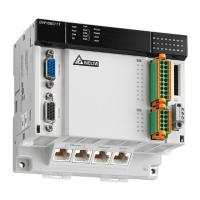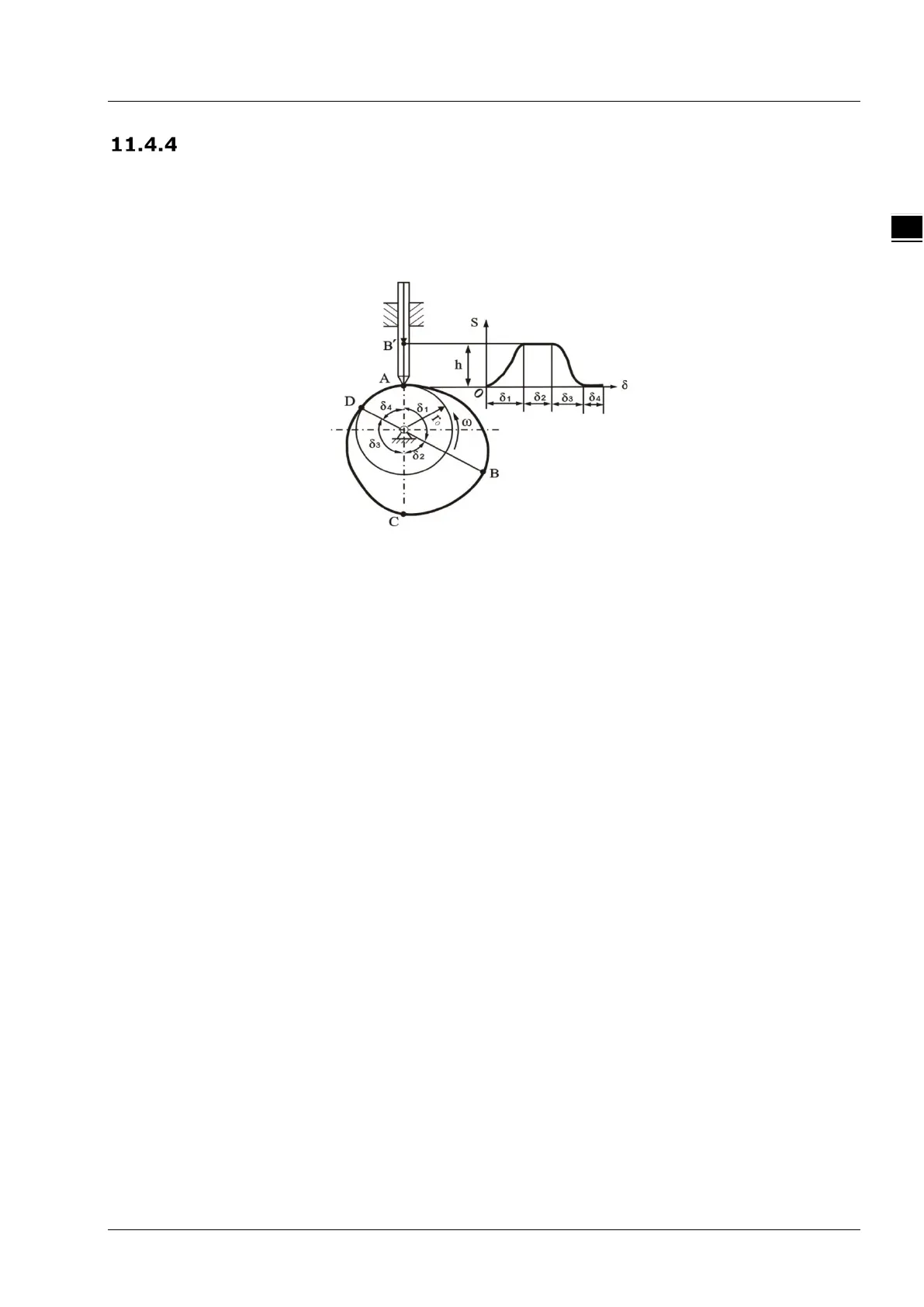Chapter 11 Motion Control Instructions
11-179
Introduction of Electronic Cam
The cam is the component with the curve profile or grooves. It transmits the motion to the follower near its
edge and the rack will turn periodically following the follower. The cam mechanism consists of a cam, follower
and rack. The following figure shows the cam profile made up of point A, B, C, and D. AB' is a follower which
is connected to the rack. δ4 is an inner angle of repose; δ2 is an external angle of repose. The radius of the
base circle is r0 and S is the cam curve.
Figure 11.4.4.1
The electronic cam is an analog cam of the mechanical cam through applying computer technology.
Compared with the mechanical cam, the electronic cam has many advantages of being easy to design and
modify; cost saving; higher efficiency and preciseness. Because the electronic cam is an analog cam, the
defects of a mechanical cam like being easy to be damaged and not fit for high-speed rotation and
transmission can be avoided for the electronic cam.
the motion controller supports the function of the electronic cam. User can edit the cam curve in the
corresponding cam editor software.
The cam curve need be called in the motion control program after being edited. The motion control program
can call the cam curve by using the MC_CamIn instruction.

